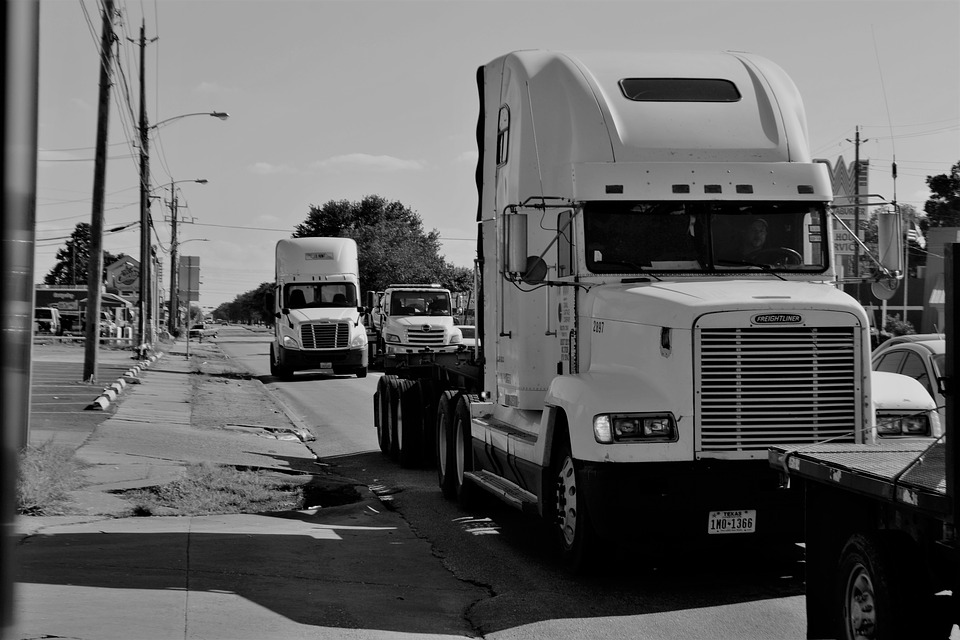Top 6 Safety Tips for CDL Drivers
 All experienced truck drivers know the importance of safe driving and following the latest laws, tips, and trends that are there to guide them and provide safety. However, on the road, safe driving is easier said than done, especially when there are a lot of factors that present themselves each day. Below are six safety tips to help you enjoy a safe drive in your truck.
All experienced truck drivers know the importance of safe driving and following the latest laws, tips, and trends that are there to guide them and provide safety. However, on the road, safe driving is easier said than done, especially when there are a lot of factors that present themselves each day. Below are six safety tips to help you enjoy a safe drive in your truck.
1. Stay alert
Know everything that goes on around you. Always look ahead on the road and around your truck. When driving down the highway especially in heavy traffic, always have an ‘escape route.’ Take notice of who is in front of you, behind you, and beside you at all times. Only by being aware can you act accordingly in case of a problem.
2. Avoid changing lanes too often
Pick a lane and stick to it. Cars will change lanes and dodge quite often no matter what. But if you see a need to change lanes, do so very carefully while constantly checking your mirror and maintaining awareness of your blind spots. Each time you move into another lane, the probability of an accident increases. If you maintain your position on the lane, in case of an accident, it will most likely be the other vehicle at fault, not you. Also, when you enter a city from the freeway, switch to the second lane from the right because this will help avoid merging vehicles. Car drivers love hugging the right lane and keep dodging all over and they tend not to merge.
3. Protect yourself from the sun
In the summer, the warmth of the sun feels refreshing, but just because you are in your truck does not mean you should not protect yourself as if you were outside. With the rays penetrating the driver’s side window, you are at risk of incurring skin damage. In fact, the Huffington Post posted an image in an article showing a driver with severe damage on one side of his face that caused that side of the face to appear many years older than the other. Also, remember the “Trucker’s Arm” that poses a risk for skin cancer.
4. Check the weather reports
Intense thunderstorms, tornadoes, hail, and flooding occur quite often. You need to be aware of what is coming your way while driving, and if you think you are heading into a dangerous zone, take another way if possible. The weather can change suddenly. So if you find yourself at the center of a storm, turn on your headlights and slow down. Rainy roads can be very slippery just like roads covered with snow. If the circumstances call for it, pull over the side of the road while taking care to avoid power lines and trees. Additionally, remember to turn on your hazard lights to alert other drivers.
5. Inspect your delivery spots on foot
Most truckers often ignore this tip. When delivering goods, especially to a new client, find a safe place to park your rig, leave it for five minutes to scope out the area. Quite frequently, a truck can get trapped in a place where it can be impossible to turn around, or in a docking facility not designed for big rigs. But scouting the area enables you to see obstacles that may stand in your way such as ditches, posts, low fire hydrants, etc. Thus, take a mental picture of the area because if you just drive in, you will be unable to see the hazards.
6. Take care of yourself
It is crucial for you as a driver to take care of yourself to avoid fatigue. According to FMCSA, fatigue is one factor that can play a significant role in road accidents. Taking proper care of yourself helps you to efficiently handle any situations that may arise while you are driving. Getting sufficient sleep is crucial while driving. The key to eliminating fatigue is taking adequate rest. Also, during the flu and cold season, watch which over-the-counter medications you take because some of them are known to cause drowsiness. FMCSA makes it a requirement for drivers to take a break for at least 30 minutes if they have been on duty for eight hours. Remember, this does not mean if they have been driving for eight hours.
Taking safety measures while driving will ensure you prevent accidents on the road and avoid causing harm to yourself and other road users. So, stay alert, avoid changing lanes too often, and take sufficient rest even as you work.

















